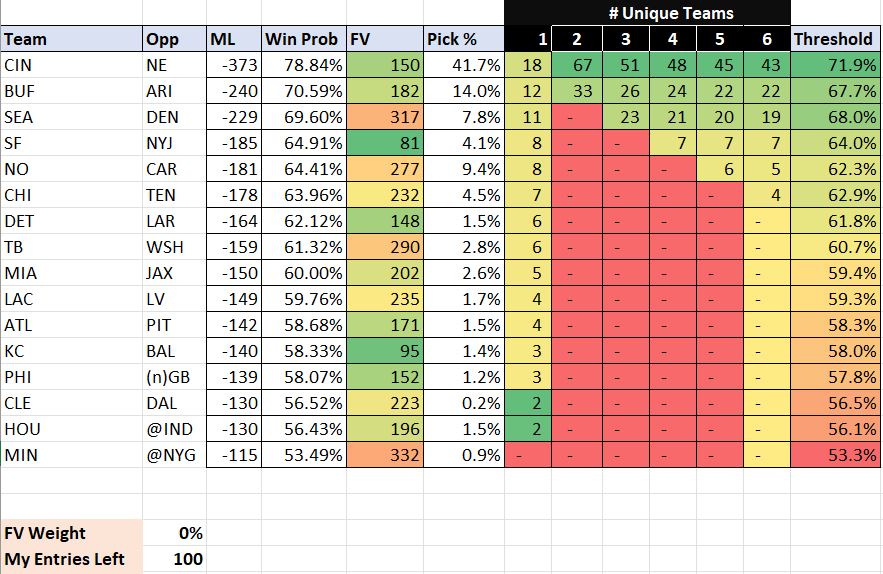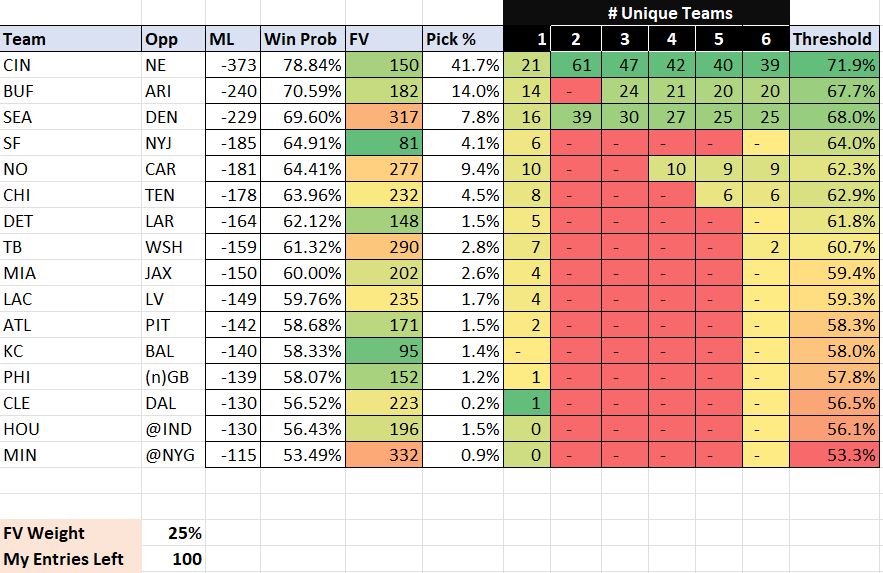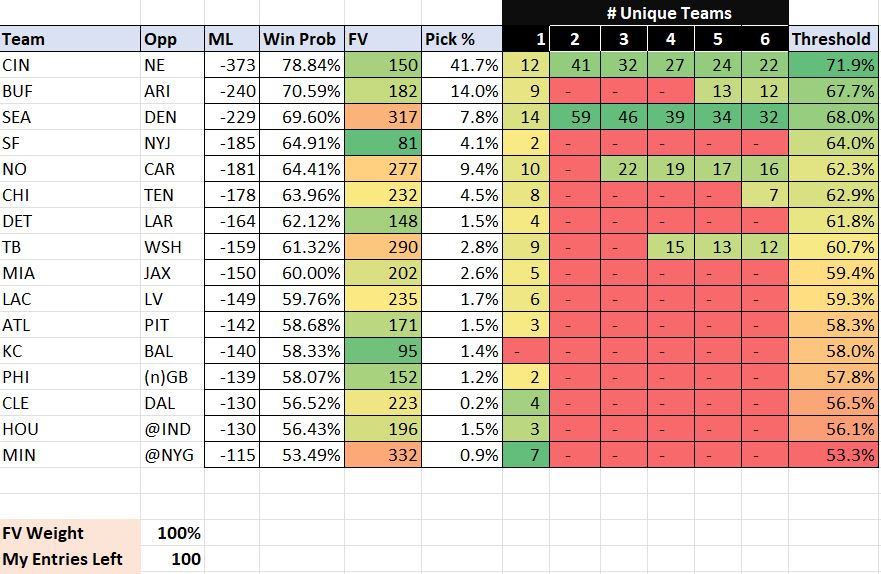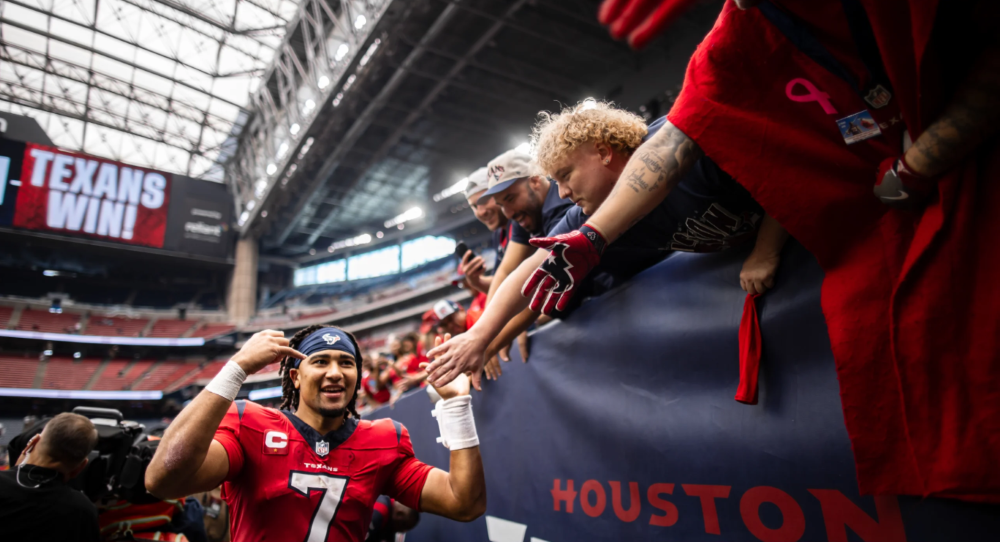News & Updates

By John Alesia
The NFL is back, and so am I with your guide to winning your Survivor pool. Before we dive into week 1, I would like to go over some key points you should be aware of before you make a pick.
Survivor Strategy Overview
1. Read All the Rules: Understanding the rules of your specific survivor pool is fundamental. Each pool can have variations in rules, such as the number of entries allowed, whether you can re-enter after elimination, multiple pick weeks, and sometimes stipulations on how many times you can pick against a team. Knowing these nuances will help you tailor your strategy effectively and avoid surprises. For instance, Circa has a rule that the Thanksgiving Day games and the Christmas games are considered a week unto themselves. Not leaving yourself a viable pick on either of those days could be costly.
2. Pool Size Determines Strategy: Pool size isn’t just a number. It’s a key factor in shaping your approach. Sticking with safer, ‘chalkier’ picks is generally more effective in smaller pools. In larger pools, however, you might need to take more calculated risks and consider contrarian picks to outlast a larger number of competitors, where simply picking favorites every week won’t be enough to win.
3. Entry Management: I like to have enough entries in a pool so that I have about 2-5% of the pool’s entries. Cost and pool rules may make this impossible to achieve, but if it is possible, I suggest it. Obviously, the more picks you have, the better your chances, but it also allows you to be contrarian with some picks and match the market on others. It is very much a DFS GPP type of mentality.
4. The Spread is King: A 7-point favorite typically has a win probability of around 73%, whether playing at home, on the road, or even within divisional games. These probabilities are derived from betting lines and account for various factors, including injuries, weather, and home-field advantage. This insight helps dispel myths about overvaluing home-field advantage in certain matchups. We may also gain an edge as some people avoid these spots when they should not.
5. Managing Expectations: Survivor pools are inherently unpredictable, and managing your expectations is crucial. For example, if you were to pick a 7-point favorite each week, the probability of not being eliminated over a 10-week period is about 4-5%. This illustrates the challenge of surviving week after week, even with strong picks. You are an underdog just to get to week 4.
6. When to Be Contrarian: I will highlight spots each week where I think it would be smart to go contrarian to the majority of the pool. I have a new spreadsheet I will be testing out this season. Based on how many entries are projected to take a team and the money line (wigless), I will show you what win% the alternative team to the chalk needs to have in order to make it a smart option. You will understand this more as I go into detail below.
I will refer to Survivor Grid as a reference. They have data from all of the major sites that host survivor pools, which will give us a good idea of where pool participants will be. Of course, with the rules in your league, things may be different.
Now, let’s get into Week 1 and look at my spreadsheet. I’ll keep it simple with 100 entries to simplify the breakdown.
Key:
- Win Projection: I calculate win probability based on each game’s mid-point of the money line that I find on the Sharp App.
- FV (Future Value): This value comes from look-ahead lines. Lower numbers indicate more future value for a team.
- Pick%: This shows how frequently a team is selected across major websites, according to survivorgrid.com.
- # Unique teams: If you have multiple entries, you can decide how many teams to spread your risk across.
- Threshold: This is new for 2024. The calculation shows that if you were going to fade the team in question, what would the minimum win percentage of the team you select have to be? This does not take into account a team’s future value, so you must adjust yourself.

Now, let’s get into Week 1 and look at my spreadsheet. I’ll keep it simple with 100 entries to simplify the breakdown.
This first look at my spreadsheet shows 0% weighted toward future value. Sticking with chalky picks is usually the best approach when playing in smaller survivor pools. In smaller pools, the emphasis should be on survival rather than differentiation since the risk of being eliminated by picking against the crowd outweighs the benefits. This strategy means leaning into teams with the highest win probabilities and not overthinking the potential future value of teams. Based on my spreadsheet, which is set to 0% future value, Cincinnati (CIN) is the standout pick this week. With a win probability of 78.84% against New England and a pick percentage of 41.7%, Cincinnati is the ultimate chalk pick that offers the safest route to surviving the week.
For those who want a little bit of diversification without straying too far from the safe picks, Buffalo (BUF) is also a strong contender. With a win probability of 70.59% and a pick percentage of 14.0%, Buffalo provides a high probability of success while being slightly less popular than Cincinnati. This makes it a great secondary pick, especially if you have multiple entries. Remember, in smaller pools, the goal is to survive each week without trying to outsmart the competition with contrarian plays. By choosing the teams with the highest win probabilities, you’re playing the percentages and giving yourself the best chance to be the last one standing.
We may veer away from the biggest favorite if the Threshold column dictates we should. If you are in a small pool, the Threshold for picking another team is 71.9%. This threshold will drop if the percentage of entries taking Cincinnati increases or if the money line comes lower, so keep an eye on the Survivor Grid and the money lines as the week goes on.
For those looking for a bit more future value, let’s consider increasing the future value to 25%.

With the future value weight set to 25%, the strategy shifts slightly towards considering teams with lower future value more heavily for immediate picks.
In this adjusted scenario, if you’re selecting two teams, Cincinnati remains a top play due to its high win probability of 78.84% against New England and manageable future value. However, Seattle now emerges as a strong second choice because it has minimal future value (FV score of 317), making it an ideal pick to burn this week without sacrificing potential options for later. Buffalo (BUF) becomes the third choice; while it has a high win probability of 70.59%, its future value of 182 suggests it could be more beneficial to reserve for future rounds.

With future value now fully weighted at 100%, the strategy shifts dramatically towards preserving high-value teams for later weeks and using lower-value teams when they offer a viable chance of winning. Under this new weighting, Seattle emerges as the top pick for the week. Despite their win probability of 69.60%, Seattle has minimal future value (FV score of 317), making them an optimal choice for immediate use. By selecting Seattle, you maintain the flexibility to use higher future value teams in later, more critical weeks.
Cincinnati (CIN), previously a top choice due to its high win probability of 78.84%, moves to the second option under the 100% future value weighting. Although they still offer strong odds this week, their future value score of 150 suggests they may be more beneficial if saved for later. New Orleans rounds out the top three choices with a win probability of 64.41% and an FV score of 277, making them a smart pick for this week, given their low future value.
Ultimately, you have to decide how you will play your pool. Hopefully, you will be around for many weeks with me as we try and survive!
-John Alesia












